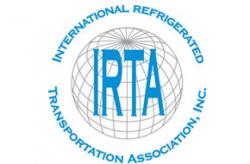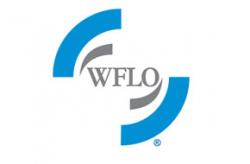The Forecast is Bright for a Changed Cold Chain
Operators around the world reflect on the pandemic’s impact on operations, markets and the future.
This time last year, the world felt altered. Warehouse operators everywhere reported the global pandemic had reshaped and changed their operations. In early summer of 2020, COLD FACTS interviewed cold storage operators about their current conditions and up-at-night issues. These ranged from supply chain disruptions to the emotional and physical care of their employee community, creating a safe work environment and meeting customer expectations … and at that point, securing PPE was still a cause for anxiety.
One year on, we check back with these same operators to get their account of how systems and operations weathered the pandemic maelstrom, whether they are readdressing strategic planning or reconsidering business models post-COVID-19 and their outlook for the global cold chain industry.
A Profound Impact
The pandemic has had a profound effect on the temperature-controlled supply chain, according to Ken Johnson, Executive Vice President, Warehousing Group at RLS Logistics. This time last summer he was focused on his customers’ inventory levels, among many other things. “While some of the changes were a reaction to the new environment we were all operating in and were temporary, some changes will be permanent,” Johnson points out. “The shift of demand from the food service side of our business to retail upset the flow for numerous logistics businesses, from warehousing to transportation.” He adds that warehouses are full throughout the United States and the labor market has tightened up tremendously. In Europe, customers and supply chain participants are now even more focused on investing in automation to minimize the risk of not having enough people on the job because of a potential pandemic or other factors impacting the labor supply, says Niels Lundgaard-Svenstrup, Nordic Network & Business Development Director at Lineage Logistics. “The global supply chain – including the European supply chain – requires steady and smooth operations, uncomplicates a complicated process and has redundancies built in. We are more focused than ever on how we can invest in automation and technology.” “The pandemic highlighted the need for resilient and flexible supply chains,” says Matt Reed, General Manager of United States Cold Storage Minooka. He shared his concerns, last year, with maintaining best practices in keeping his teams safe and socially distanced in the face of changing government guidelines. “As our partners and customers faced the same challenges at the same time as our industry, trusted supply chain partners were essential to keeping food on our families’ tables. We all had to be accommodating and patient in navigating the new norms.”
Reed says the shared experience of facing the challenges of the pandemic strengthened the partnerships with customers and partners in the supply chain. “These relationships benefit us all in the long run as we continue to find ways to adjust to future disruptions.” “The global supply chain has most definitely changed – we’re seeing shortages in materials used in the manufacturing of goods as a result of inventory redundancies across many sectors of the supply chain,” notes Stephen Draper, Regional Vice President – Southeast, Americold. “In my opinion, most goods are getting to the consumer quicker while still moving through 3PLs but, given the current demand because of the raw material shortages, we’ll see some delays for a few more months.”
“In Australia, there has been a strong and steady grocery supply chain, while food service has moved up and down more with the pandemic because of forced lockdown situations,” reports Tom Kennedy, General Manager of Americold’s facility in Murarrie, Australia. Mauricio Barrera, Chairman of Qualianz in Mexico, concedes the global cold chain is not the same since the pandemic. “Although we’re seeing a healthy and steady level of demand for temperature-controlled food products – geographical distribution, product mix and certain seasonal products have all suffered changes, much like in many other industries.” As the pandemic spread through Brazil in the summer of 2020, Gustavo Labate, Operations Director of Superfrio, was focused on communicating with, and motivating, his teams and keeping up morale. “All the health safety criteria we have implemented like providing employee transportation, hygiene and cleaning and PPE all add up to higher operating costs as a result of the pandemic,” says Labate.
“We also have to figure in the high absenteeism rates for sick leave from confirmed and suspected cases of COVID-19.” Manoel Honorio, Operational Manager at Brazilian company Friozem, admitted his greatest challenge last summer was containing panic when someone at the company became ill, regardless of the cause. “The cold chain has experienced the same changes as supply chains overall because of the pandemic, but we have the additional changes in the level of health requirements. Also, the pandemic has shown the importance of using technologies to support operations that are increasingly fractioned, complex and on really short deadlines.”
New SOPs
As an essential industry, RLS had to provide safeguards to all its employees, whether that was shifting to work at home, providing additional cleaning regimens and supplies or placing barriers between workers that had to be on-site, says Johnson. “Some, if not all, will remain as part of our SOPs moving forward. It has certainly made us a more professional industry by forcing us to deal with all of the adversity we have had to over the last 18 months.” Draper notes while they have always had emergency preparedness and business continuity plans, they have seen benefits from the safety protocols enacted with the pandemic. “We are absolutely adding best-in-class measures to better react in the future.”
United States Cold Storage used data science to develop new tools to enable business resilience planning and intelligent appointment scheduling explains Reed. “Those tools have been successfully deployed across our network, and we plan to continue to design data-driven decision-making tools to enhance our flexibility and adaptability to changing business environments.” “Our goal has been to prevent COVID from coming into the workplace,” says Kennedy. “Some of the changes that are now SOPs include working with our casual labor suppliers to ensure they are in line with Americold’s COVID programs.” Lundgaard-Svenstrup reports a tremendous demand for process automation and as customers are starting to see digitization efforts as a core component of their overall strategy. “For example, the pandemic forced us to reinvent how we interact with our drivers. We implemented a contactless driver check-in and check-out process and launched our driver mobile app to facilitate the operation.”
Growth of E-Commerce
In March 2020, consumers, forgoing public venues and eating at home, stocked up on groceries and supplies, boosting sales for the month by 29% over the prior year, according to Supermarket News. Meanwhile, sales declined at restaurants, fast-food locations, coffee venues, and casual-dining locations by 27% that month. “The growth and demand in the temperature-controlled market doubled almost immediately,” recalls Johnson. “The demand eased a bit as people started to eat out more and travel, but it has still remained high.” One of the biggest impacts of the pandemic on the cold chain has been the growth of direct-to-consumer e-commerce and Johnson says the shift is driving a lot of changes in the industry. “Consumers flocked to the directto-consumer offerings and our industry has benefited tremendously. While the demand has eased up post-pandemic, it is still much higher than pre-pandemic.”
At the same time, Johnson says, the labor market has tightened tremendously as businesses are opening up and the demand for labor has increased. “Unfortunately, we are all fighting for the same pool of warehouse workers and drivers, which is driving up overall labor costs,” he points out. “Decisions will have to be made as to who will bear this additional expense in the long run.” The growth in online food shopping, of course, is not just a North American phenomenon. “Online food shopping appeared quite quickly as a trend in Brazil,” says Honorio. “Several retail companies have created exclusive channels for this purpose, and e-commerce has increased significantly.” Henry Ha, CEO of Metcold in China, noted in 2020 how surprised he was at the magnitude of the shift in consumer habits that was accelerating fresh food e-commerce sales. Now, he says the latest statistics put e-commerce sales at about 30% of the overall grocery market in China, up from 5% in 2018. “The rapid growth of these new retail channels is reshaping supply chains and raising new demands for more efficient and flexible services,” says Ha.
Inventory Challenges
“Since last year when countries were forced to close down industries due to COVID-19, we have explored the need, and potential demand from our customers, for ‘extra safety stock’ to provide a buffer to supply chain challenges,” explained Lundgaard-Svenstrup. “Food manufacturing and retailers are looking to mitigate the risks of not having enough product in storage, or not having it stored in the right locations.” “Certainly, we have seen a tendency from our clients to prioritize inventories,” says Barrera. “As market conditions and demand dynamics become less predictable, the importance of healthy inventory levels will remain key for our clients in order to maintain high levels of service demanded by their consumers.” Draper says he definitely sees nuances in how the supply chain is reacting to the pandemic and is interested in a couple of shifts. “First, I’m curious to see if supply chains continue to embrace the Just In Time (JIT) methodology or if inventory levels increase given producers hesitancy to experience disruptions like we’ve seen the last 14 months,” he admits. “Second, with limited access to labor and the demand on retail sectors, I’m curious to see if manufacturers reduce the number of SKUs to ensure materials are available for top sellers.” In Australia, Kennedy notes customers are requiring more flexibility from their warehouse operators, especially when potential lock downs can cause uncertainty with consumers and cause impact buying. “It’s important to be in communication with customers so we can be ready to assist.”
The Outlook is Bright
“The COVID-19 pandemic focused a spotlight on the food supply chain, as it rapidly created challenges in food supply and accelerated the adoption of online grocery shopping, fueling greater demand for cold storage facilities,” says Lundgaard-Svenstrup “The pandemic also showed how the cold storage industry can readily adapt to new customers and environments, and we are very optimistic about the future.” Johnson believes the past year has helped solidify the continuing need for temperaturecontrolled logistics and will be a driving force in new players entering the market while consolidation of existing operators will continue as well. “The pandemic has made us better operators, and I believe we passed this difficult test with flying colors. Good things are happening for all of us who have had the ability to weather this storm.” “The future of the cold chain is bright,” Reed believes. “We have proven that our industry is an essential component of the consumer food chain and we have a revitalized commitment to safely storing and transporting the food our American families love to eat.” Kennedy points out that temperature-controlled storage remains a critical front-line service, and even as Australians get vaccinated, the temperature-controlled supply chain remains critical infrastructure. He expects to see continued stronger demand. “This is especially true in Australia, where we have strong import and export food supply chains – our future looks quite positive.”
“In China, we are seeing rapid growth in demand for temperature-controlled storage and operating/sorting/processing facilities,” explains Ha. “We are very confident that the growth trend will continue for the foreseeable future.” In Brazil, Honorio believes the cultural shift towards consumers replacing non-refrigerated products, such as those sold in traditional markets, with refrigerated products, will grow more and more. “This growth is motivated mainly by the confidence consumers have in the processes of the cold chain that guarantees more demanding health protocols.” “There will always be a need for services in the temperature-controlled space because the demand for food doesn’t change much, even if the end point of consumption varies,” reasons Draper. “No matter where a french fry ends up – in a retail grocery store, at a restaurant or exported overseas – it needs a home at 0 degrees along its journey in the food supply chain. The cold chain is ready to deliver and better prepared than ever.”
ALEXANDRA WALSH is a Senior Publishing Consultant with Association Vision and Editor-In-Chief of COLD FACTS.
EMAIL: awalsh@associationvision.com



